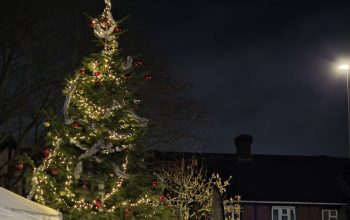Stargazers are being encouraged to dust off their telescopes to see Jupiter and Saturn almost come together on Monday, a spectacle which some believe may have been the “star of Bethlehem”, chronicled in Matthew’s gospel.
The planetary alignment is expected to take place on December 21 from about 4.30pm. Viewers should keep a close eye on the southwestern horizon to see this “double-planet”.
Such “great conjunctions” take place around every 20 years, but are not often visible to the naked eye. Monday’s display will see the planets come so close that they will appear as one star.
According to EarthSky’s astronomers Deborah Byrd and Bruce McClure, the planets will be merely 0.1 degrees apart. This celestial phenomenon will be “appealing and mind expanding”.
The last time the stars came together in such close alliance was 400 years ago, back in 1623. The next time it will happen will be in 2080.
Matthew Bate, astrophysics professor from Exeter University, said: “As far as we know, nobody will have seen Jupiter and Saturn so close together in a telescope eyepiece ever before this year.”
There is much speculation that a great conjunction such as this may have been responsible for the biblical story of the star of Bethlehem – a star which appeared in the sky and guided the Three Wise Men to the stable where Jesus was born.
The director of the Vatican Observatory told the Catholic News Agency that regardless of the truth of such claims, it would be a “pretty sight everyone should look at”.
Brother Guy Consolmagno said: “Is this really what the Star of Bethlehem was? No one knows for sure what the star was, and until we have a time machine where we can go back and interview Matthew with a video recorder, no one ever will know for sure!”
Dr Brad Tucker from the Australian National University said that to marvel at this celestial “Christmas kiss” night sky, observers should look for “a thin crescent moon and two bright objects right next to it”.
You will see Saturn and Jupiter close to each other, however, unlike stars, they will not twinkle but instead emit a constant gleam.
“You should be able to see the rings and shape of Saturn and the moons of Jupiter with a relatively small telescope,” Tucker said.






